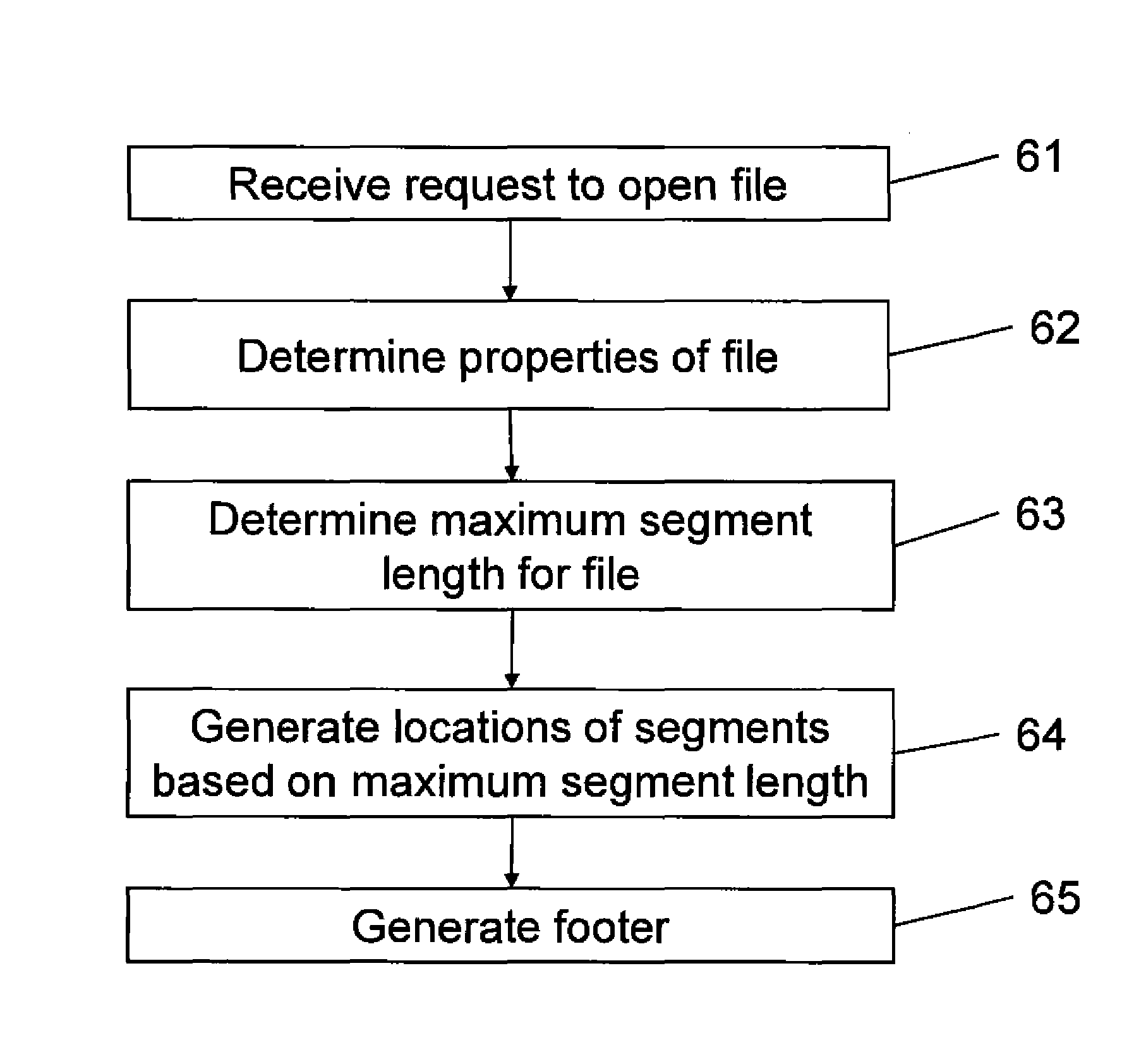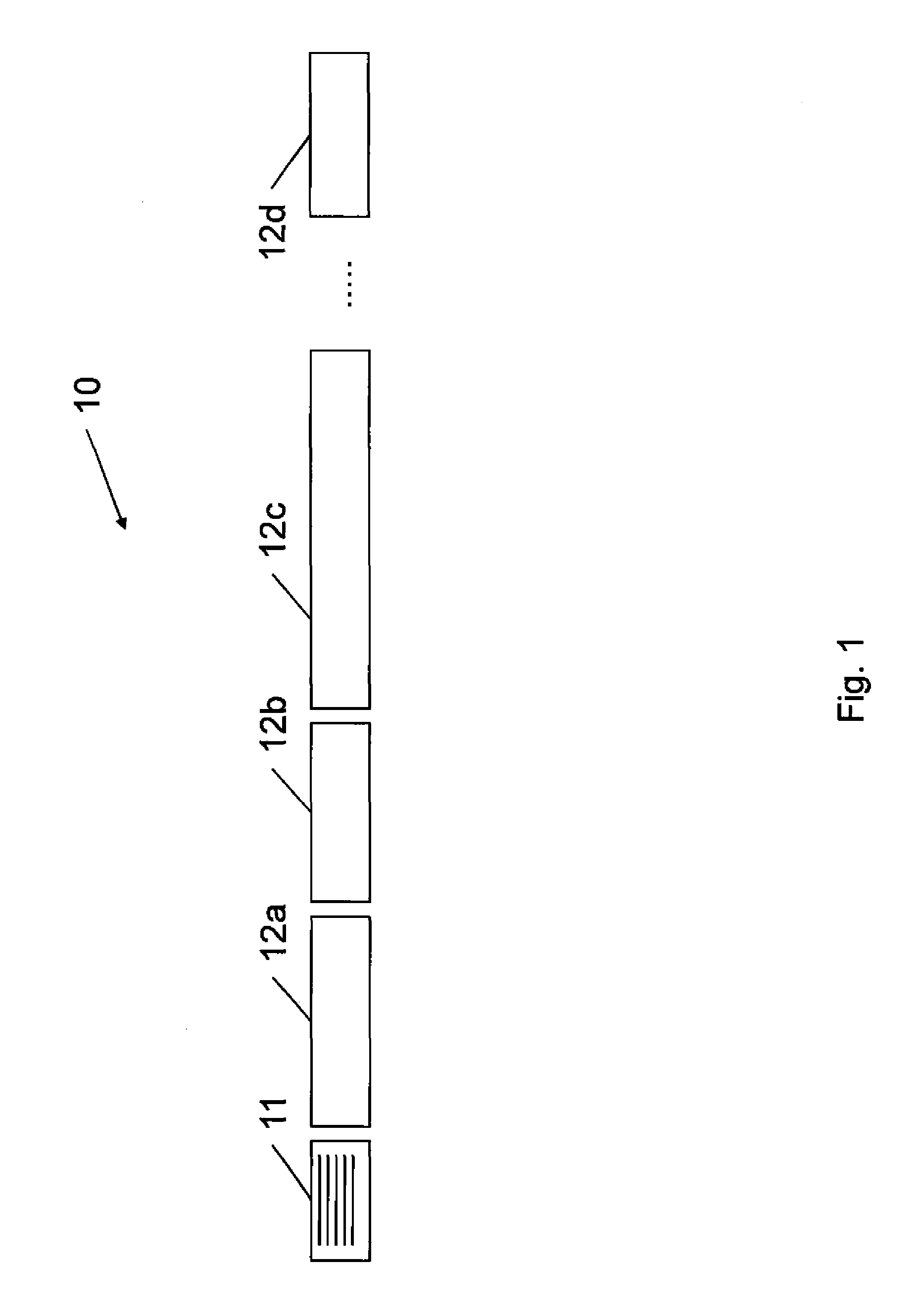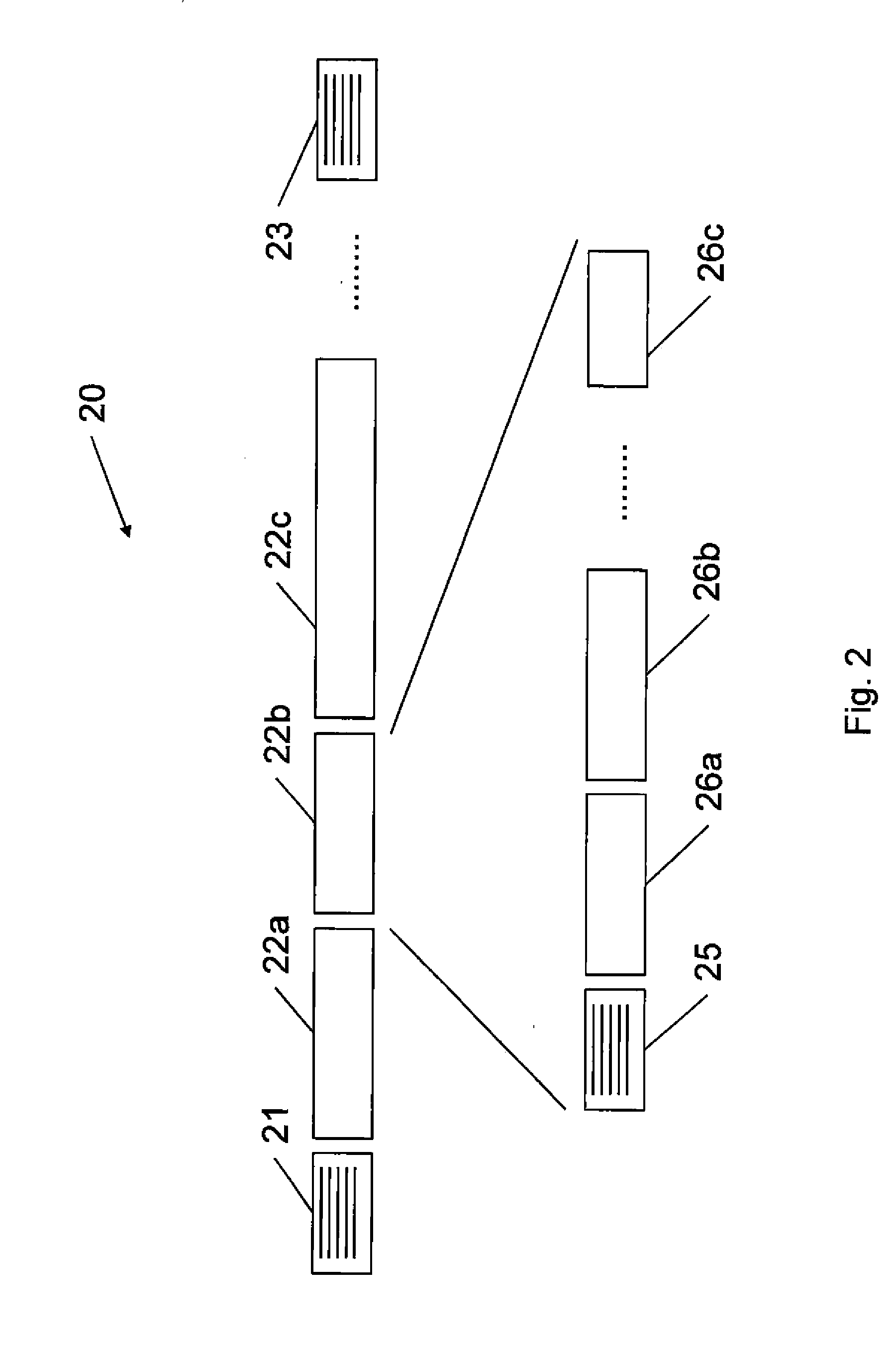Methods and systems for providing file data for media files
a technology for media files and file data, applied in the direction of transmission, electric digital data processing, instruments, etc., can solve the problems of insufficient bandwidth available, reducing the quality of video requests, and not great overhead of creating files in advan
- Summary
- Abstract
- Description
- Claims
- Application Information
AI Technical Summary
Benefits of technology
Problems solved by technology
Method used
Image
Examples
Embodiment Construction
[0055]A file system in accordance with a first embodiment of the invention is shown in FIG. 5. The file system 51 comprises a data store 52, a file record database 53, and a file system gateway 54. The file system 51 is in the present embodiment used as part of an IIS server system as described above with reference to FIG. 3, to provide file data for the fragmented MPEG-4 format files of differing quality required by the Smooth Streaming media service. However, the skilled person will appreciate that the file system 51 could equally be used with other systems that request portions of media files, and is not restricted to use only for providing files for an IIS server, and / or for providing files to be used with the Smooth Streaming media service.
[0056]The data store 52 of the file system 51 contains original file data for video that can be streamed by the IIS server. This is the file data from which the files of differing quality required by the IIS server are derived. However, the f...
PUM
 Login to View More
Login to View More Abstract
Description
Claims
Application Information
 Login to View More
Login to View More - R&D
- Intellectual Property
- Life Sciences
- Materials
- Tech Scout
- Unparalleled Data Quality
- Higher Quality Content
- 60% Fewer Hallucinations
Browse by: Latest US Patents, China's latest patents, Technical Efficacy Thesaurus, Application Domain, Technology Topic, Popular Technical Reports.
© 2025 PatSnap. All rights reserved.Legal|Privacy policy|Modern Slavery Act Transparency Statement|Sitemap|About US| Contact US: help@patsnap.com



